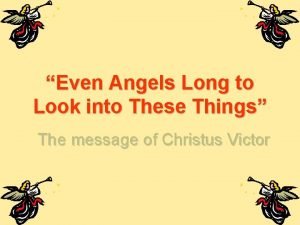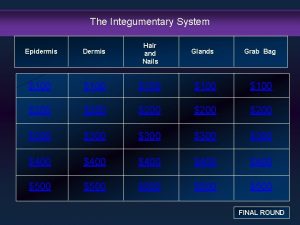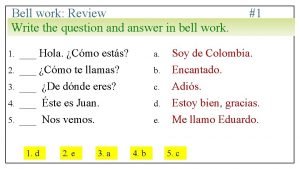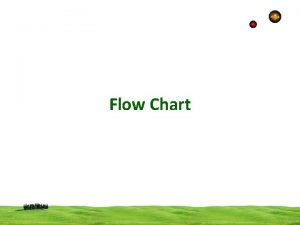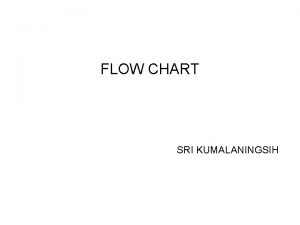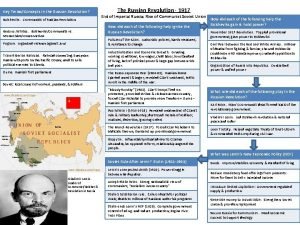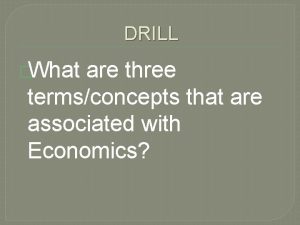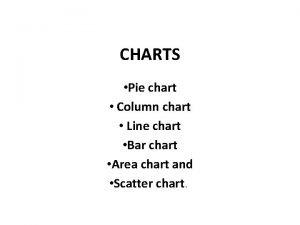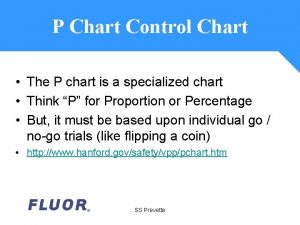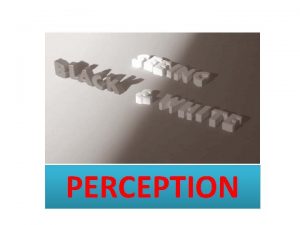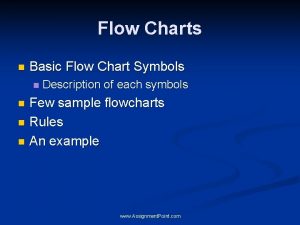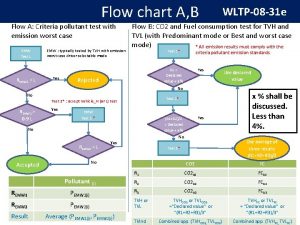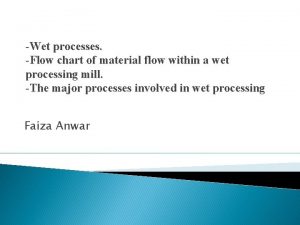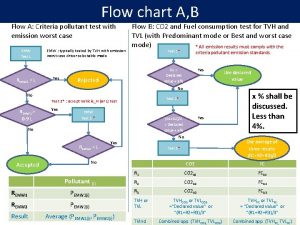Organize these termsconcepts into a flow chart that






















- Slides: 22

Organize these terms/concepts into a flow chart that describes the origin & early evolution of life on Earth Organic polymers Chloroplast (plastid) Inorganic molecules Energy (UV, lightning, kinetic, heat) Protobiont Liposome Prokaryotic cell Organic monomers Eukaryotic cell Mitochondrion Endosymbiosis (phagocytosis) Ribozymes RNA DNA Infolding of cell membrane to form endomembrane system

Target VI- Endosymbiont Hypothesis Summary

Endosymbiont Hypothesis and the Origin of Eukaryotic Cells Evidence for Serial Endosymbiosis: • Size of chloroplast & mitochondria about same size of prokaryotic cells • Inner membranes of mitochondria & chloroplasts differ from the membranes of cell’s plasma membrane • Mitochondria & chloroplasts divide using binary fission like prokaryotes • Mitochondria & chloroplasts divide independent of rest of eukaryotic cell • Mitochondria & chloroplasts have separate, circular ring of DNA like modern prokaryotes • Mitochondria & chloroplasts may be susceptible to antibiotics like bacteria • Mitochondria & chloroplasts have ribosomes that are more similar to prokaryotes

The Cell Theory • Cells are the smallest unit of life • All organisms are made of one or more cells • All cells come from other cells

The big picture: biological organization * smallest unit of life

Target I • Determine the surface area to volume ratio (size) of various cells to predict the rate of diffusion for monomers entering and exiting the cell; relate calculations to cell shape.

Why are cells small? • Use these figures and some basic math to explain why cells are small…

Target V • Infer similarities and differences about the three domains of life (Bacteria, Eukarya, and Archaea) from a cladogram.

Cells, domains, and kingdoms (oh my!) Kingdom Fungi Kingdom Archaea Kingdom Protista Kingdom Bacteria Domain Archaea Kingdom Animalia Kingdom Plantae Domain Eukarya L. U. C. A. • In what domains would you find eukaryotic cells? In what kingdoms? • In what domains would you find prokaryotic cells? In what kingdoms?

Target IV • Compare and contrast prokaryotic and eukaryotic cells.

Compare & Contrast Eukaryotic cells ONLY Prokaryotic cells ONLY Both Prokaryotic AND eukaryotic cells

Prokaryotes / Eukaryotes • no nucleus • no separate organelles • only bacteria • evolved first • nucleus • many organelles • all other cells • evolved from prokaryotes

Prokaryotes / Eukaryotes • Common Characteristics: – – cell membrane cytoplasm ribosomes contain DNA

Introduction to Organelles and Microscope Lab (Target B): Plant versus Animal Cells

Compare & Contrast - part deux NOT in Plant cells Both animal AND plant cells NOT in Animal cells

Plant or Animal?

Plant or Animal? ONLY found in plant cells: 1. Cell Wall 2. Chloroplast (Plastid) 3. Large, Central Vacuole and Tonoplast 4. Plasmodesmata

Plant 1. Cell Wall - gives strength and rigidity to cell 2. Chloroplast - green, site of photosynthesis 3. Vacuole - large, central storage space 4. Plasmodesmata- channels through cell walls

Animal 1. Lysosome- digestive enzymes, macromolecules hydrolyzed 2. Centrioles- pair, in centrosome 3. Flagella - some animal cells have

Target II & III • Visually identify and explain the function of the following cell organelles: ribosome, endoplasmic reticulum (rough and smooth), Golgi complex, mitochondrion, vacuole, and chloroplast. • Describe how organelles interact to accomplish a task within a cell, tissue, organ, or organism.

Cell Applications & Thinking: Describe a cellular process that involves at least THREE organelles. List organelles in the order in which they are used during the cellular process. Name a specific kind of cell in plant or animal tissue that has an abundance or is completely lacking a particular organelle. Explain how the number and kinds of organelles present in that cell dictate the cell’s (or tissue’s) function. What is the significance of each membrane-bound organelle having different proteins embedded within their membrane?

CELL THOUGHTS TO PONDER: • If Elodea and onion are BOTH plant, why don’t onion cells have chloroplasts, but the Elodea cells do? • Why couldn’t we see mitochondria, ER, lysosomes, ribosomes in any of our specimen’s cells when we did the microscope lab? • Are plant & animal cells prokaryotic or eukaryotic? Cite evidence from your lab observations! • What structures between plant cells aid in transport of materials thru plant body?
 These are mental templates by which we organize our worlds
These are mental templates by which we organize our worlds Self serving bias
Self serving bias Phân độ lown ngoại tâm thu
Phân độ lown ngoại tâm thu Block xoang nhĩ ecg
Block xoang nhĩ ecg Thể thơ truyền thống
Thể thơ truyền thống Thơ thất ngôn tứ tuyệt đường luật
Thơ thất ngôn tứ tuyệt đường luật Walmart thất bại ở nhật
Walmart thất bại ở nhật Tìm vết của đường thẳng
Tìm vết của đường thẳng Con hãy đưa tay khi thấy người vấp ngã
Con hãy đưa tay khi thấy người vấp ngã Tôn thất thuyết là ai
Tôn thất thuyết là ai Gây tê cơ vuông thắt lưng
Gây tê cơ vuông thắt lưng Sau thất bại ở hồ điển triệt
Sau thất bại ở hồ điển triệt Cheese production process flow chart
Cheese production process flow chart Both indoor and outdoor sports
Both indoor and outdoor sports Direct questions into indirect questions
Direct questions into indirect questions Naming words places
Naming words places If i knew her telephone number
If i knew her telephone number Translate
Translate Even angels long to look into these things
Even angels long to look into these things Translate these sentences english
Translate these sentences english Active and passive voice grade 11
Active and passive voice grade 11 These folds shape the epidermis into fingerprints:
These folds shape the epidermis into fingerprints: Que significa write these sentences into questions
Que significa write these sentences into questions


















